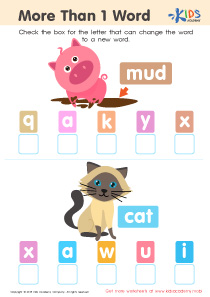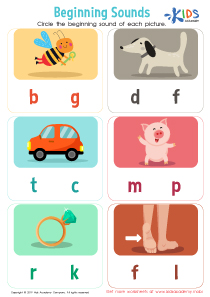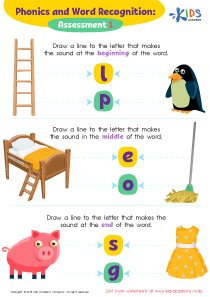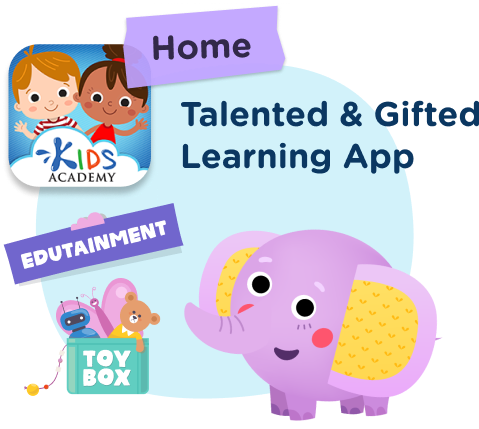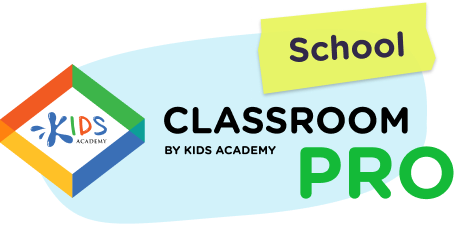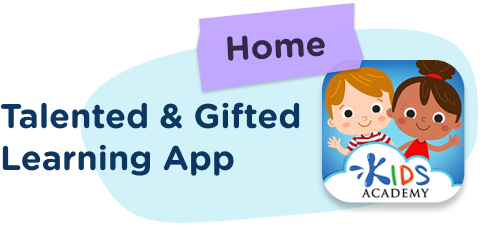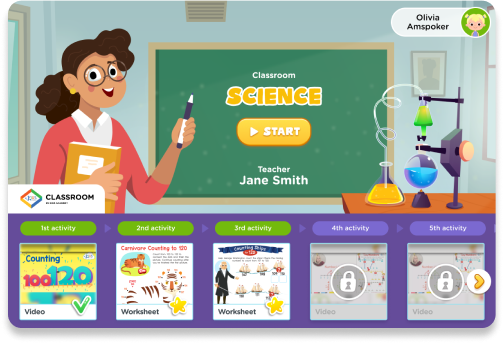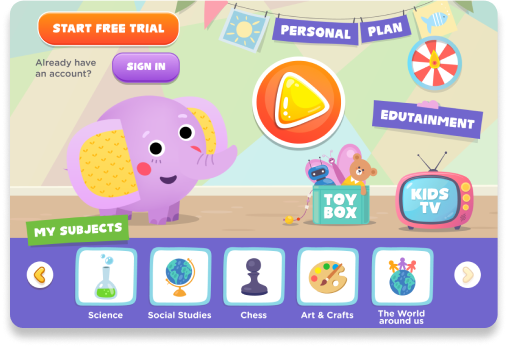Word Recognition Consonants Worksheets for Ages 4-7
7 filtered results
-
From - To
Explore our engaging Word Recognition Consonants Worksheets designed specifically for children aged 4-7! These interactive, printable resources help young learners master essential consonant sounds and improve their reading skills. Each worksheet is crafted to encourage phonetic awareness through fun activities, such as matching words to images, tracing letters, and completing simple sentences. Perfect for home or classroom use, our worksheets promote letter recognition and vocabulary building in an enjoyable way. Foster a love for reading while enhancing your child’s literacy skills early on. Start your journey to confident reading—download our worksheets today and give your child the tools they need to succeed!
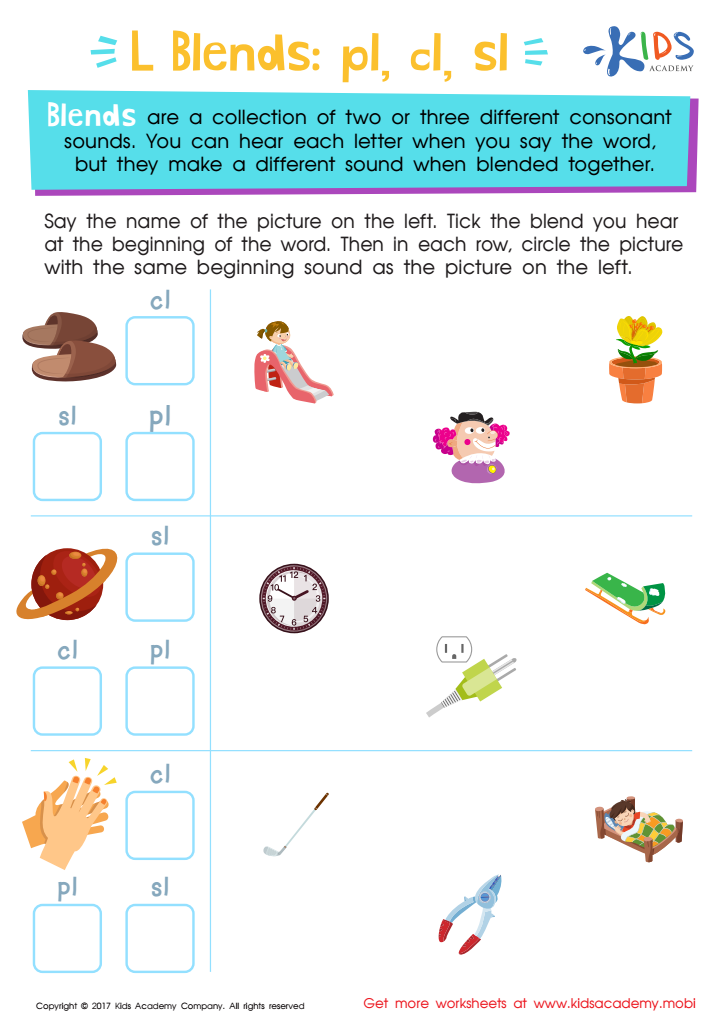

L Blends: "Pl", "Cl" and "Sl" Printable
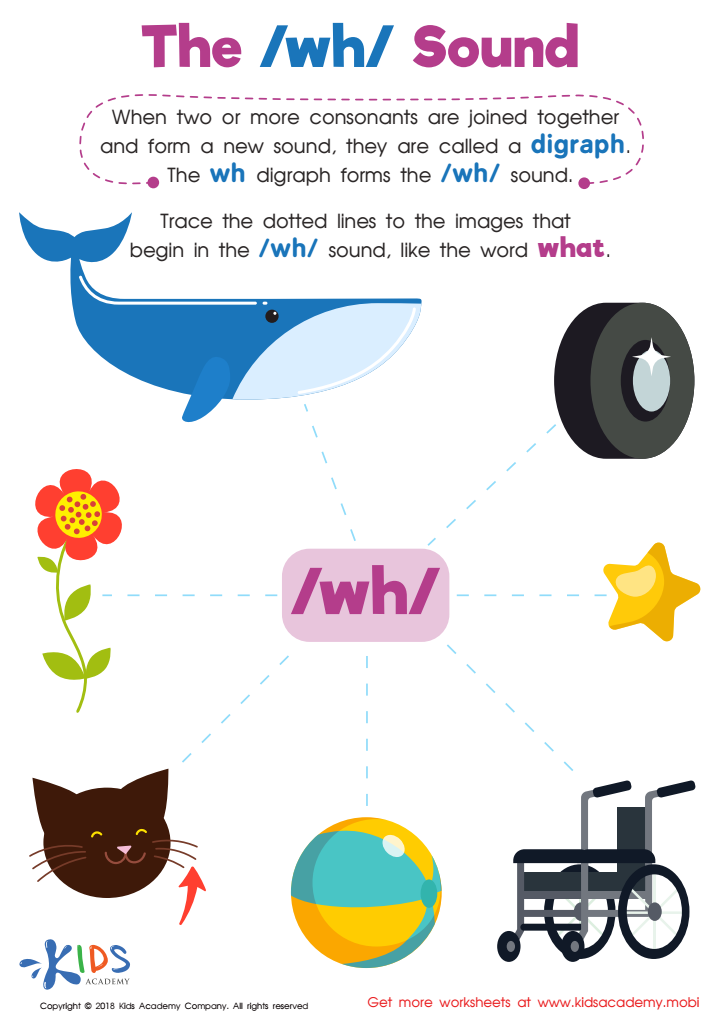

The /wh/ Sound Worksheet
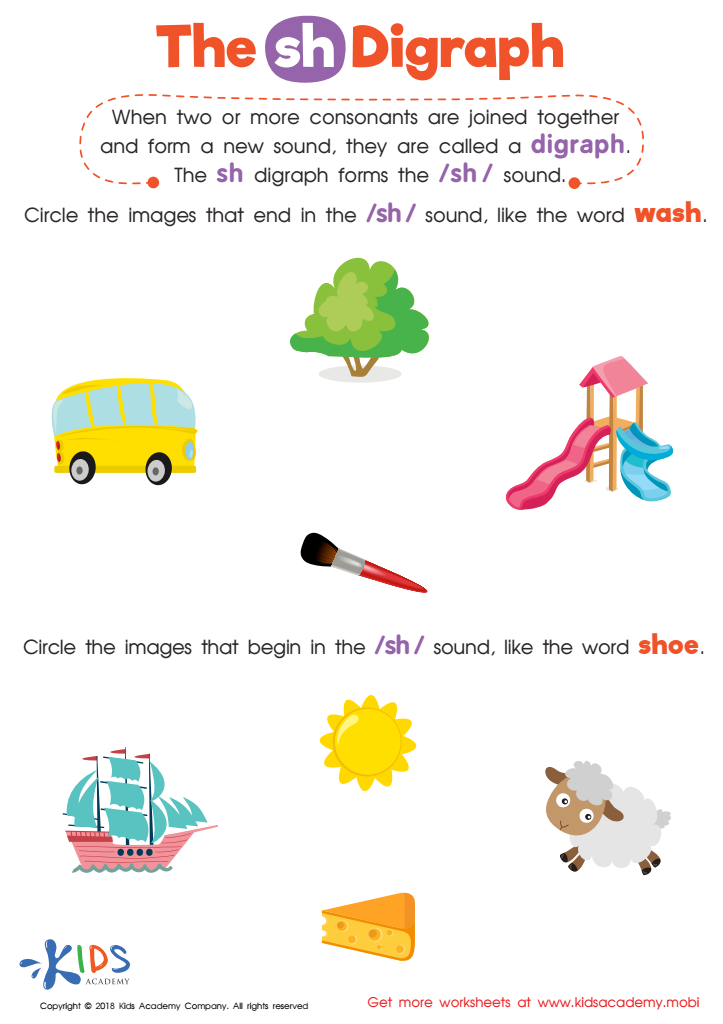

The SH Digraph Worksheet
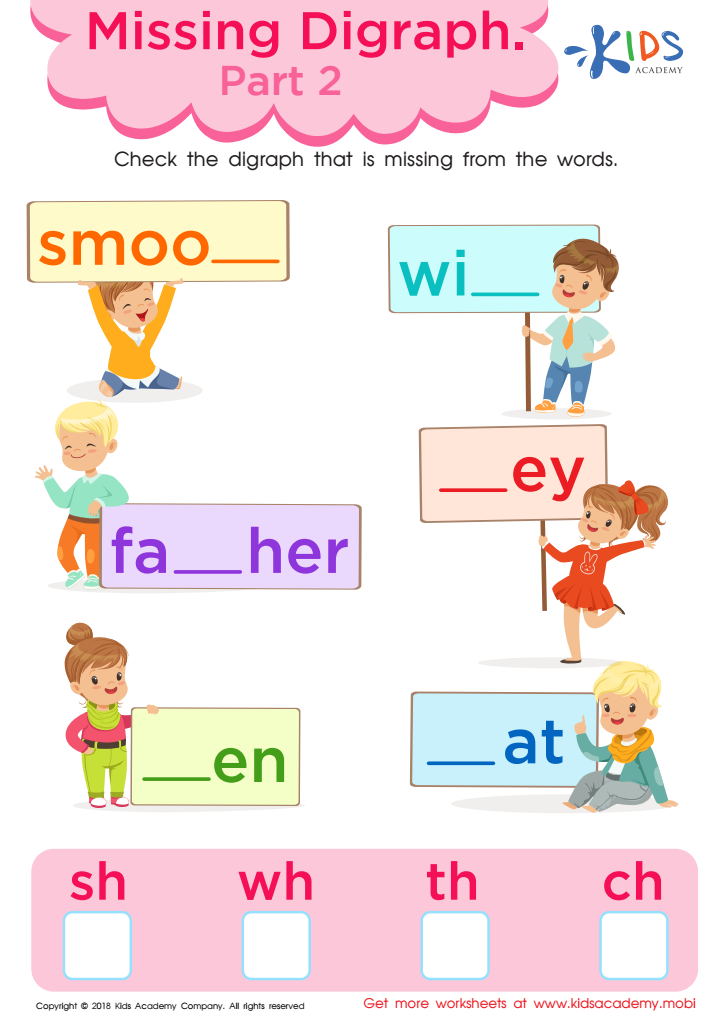

Missing Digraph: Part 2 Worksheet
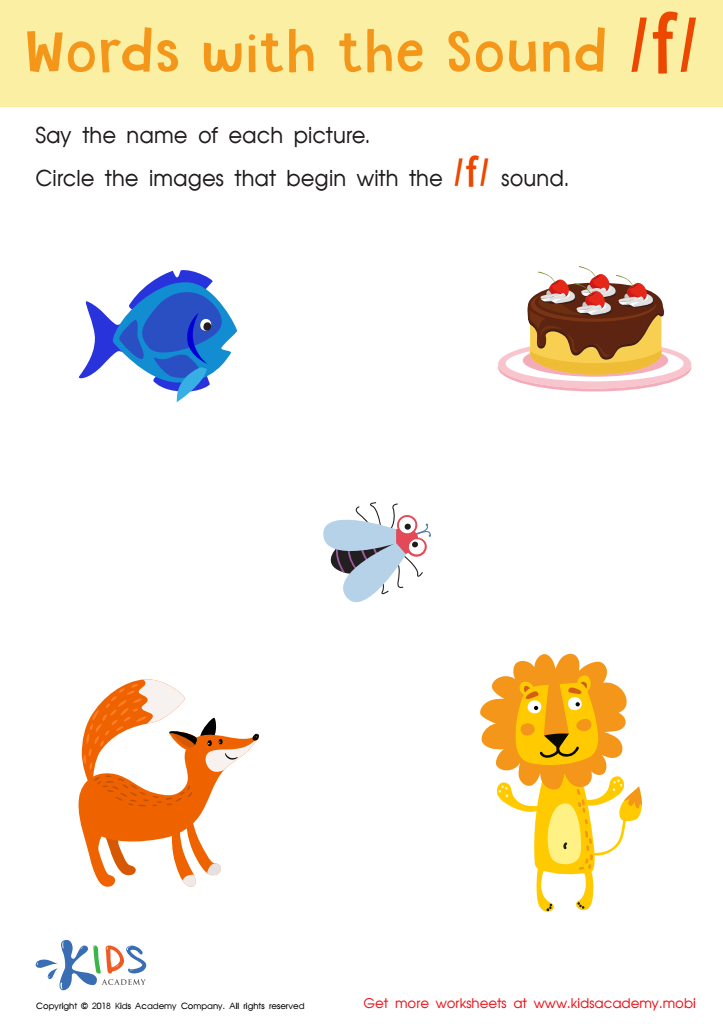

Words with sound f Reading Worksheet
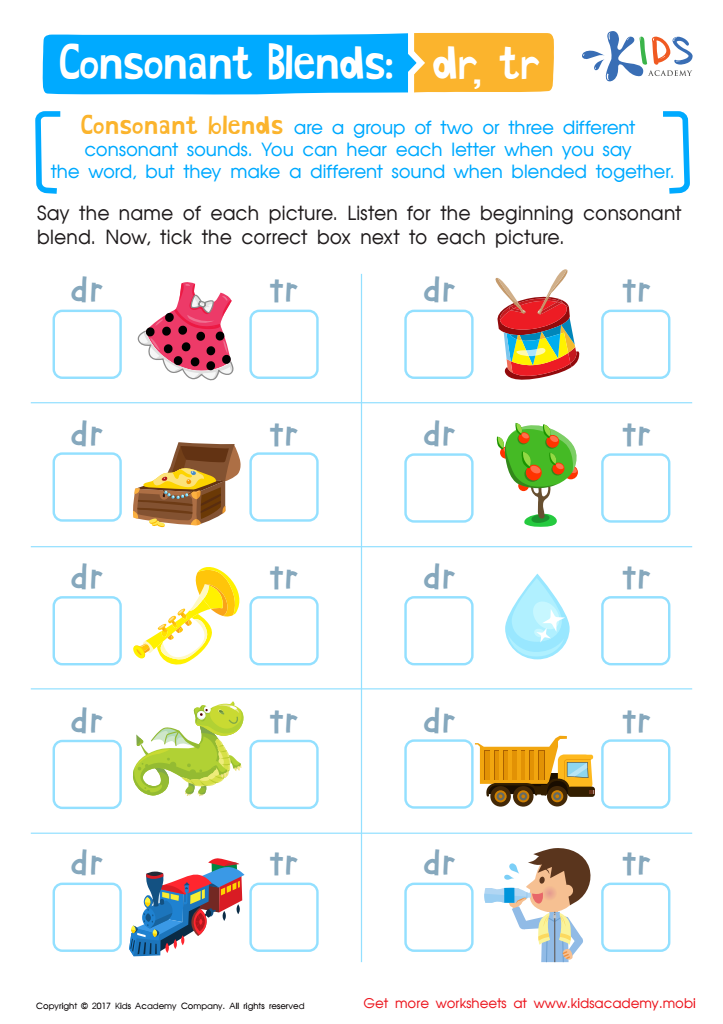

Consonant Blends: "Dr" and "Tr" Printable
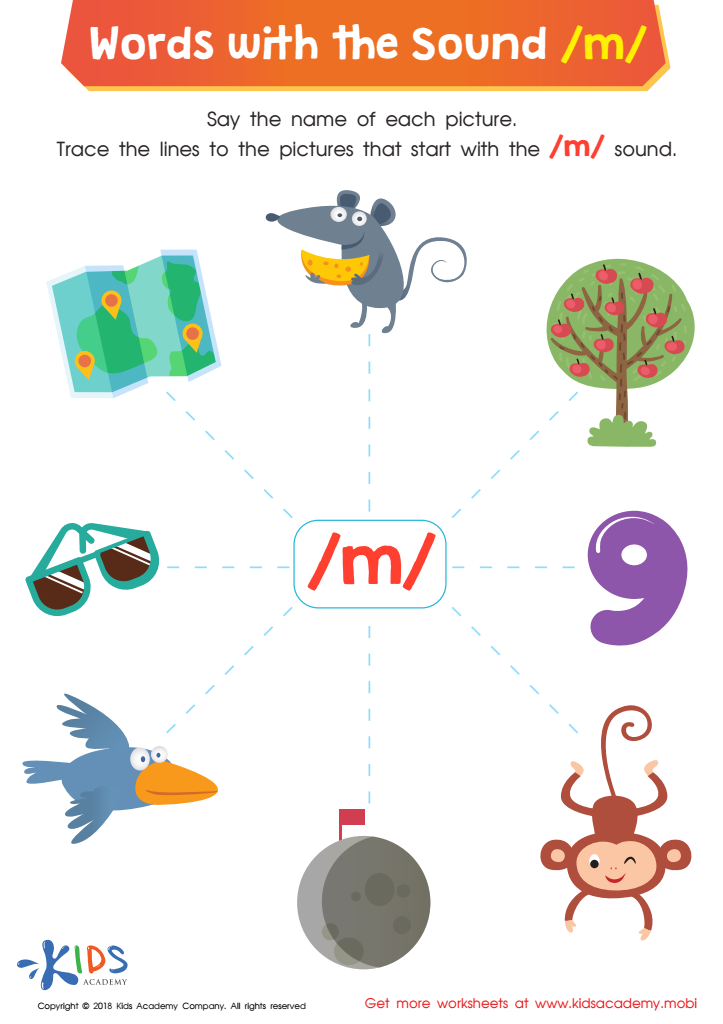

Words with Sound M Reading Worksheet
Word recognition consonants form a fundamental building block in the literacy development of children aged 4-7. At this critical stage, kids are beginning to understand the connection between letters and sounds, a skill essential for reading fluently. Parents and teachers should prioritize this aspect of literacy because it directly influences a child's ability to decode words and develop comprehension skills.
When children learn to recognize consonants and their sounds, they can begin to blend letters together to form words, leading to improved reading proficiency. Strong consonant recognition aids in spelling, vocabulary development, and overall language skills. Additionally, mastering consonant sounds fosters confidence in young readers, making them more willing to engage with texts and explore new reading materials.
Moreover, early intervention can address any challenges a child may face, setting the groundwork for future academic success. Engaging children in games, songs, and activities centered around consonant recognition nurtures a positive learning environment that promotes phonemic awareness and literacy enthusiasm. Ultimately, cultivating these foundational skills equips children with the tools necessary for effective communication and lifelong learning, enriching their educational experience and personal growth.
 Assign to My Students
Assign to My Students



